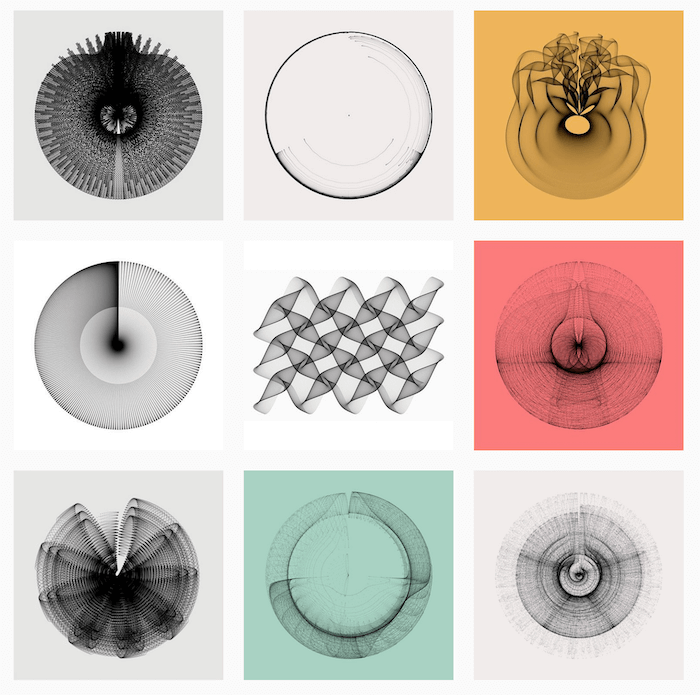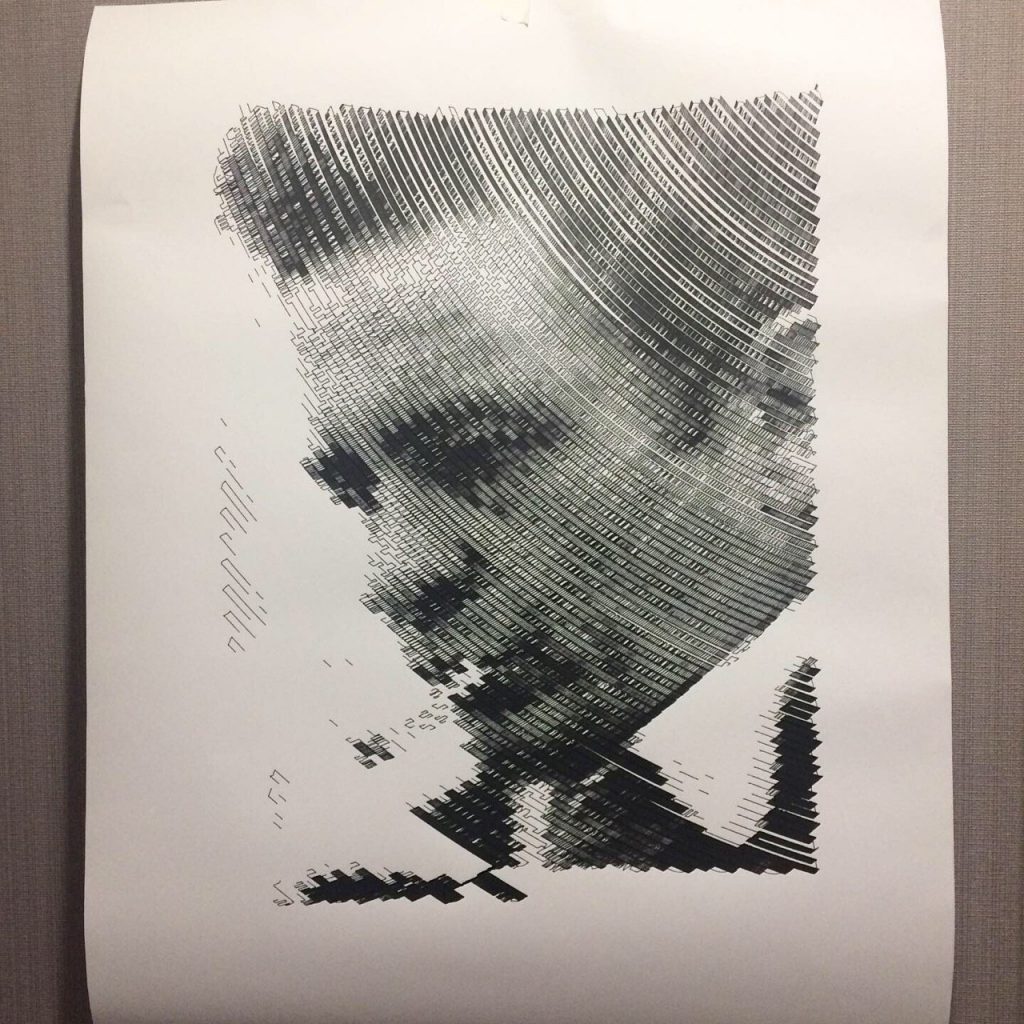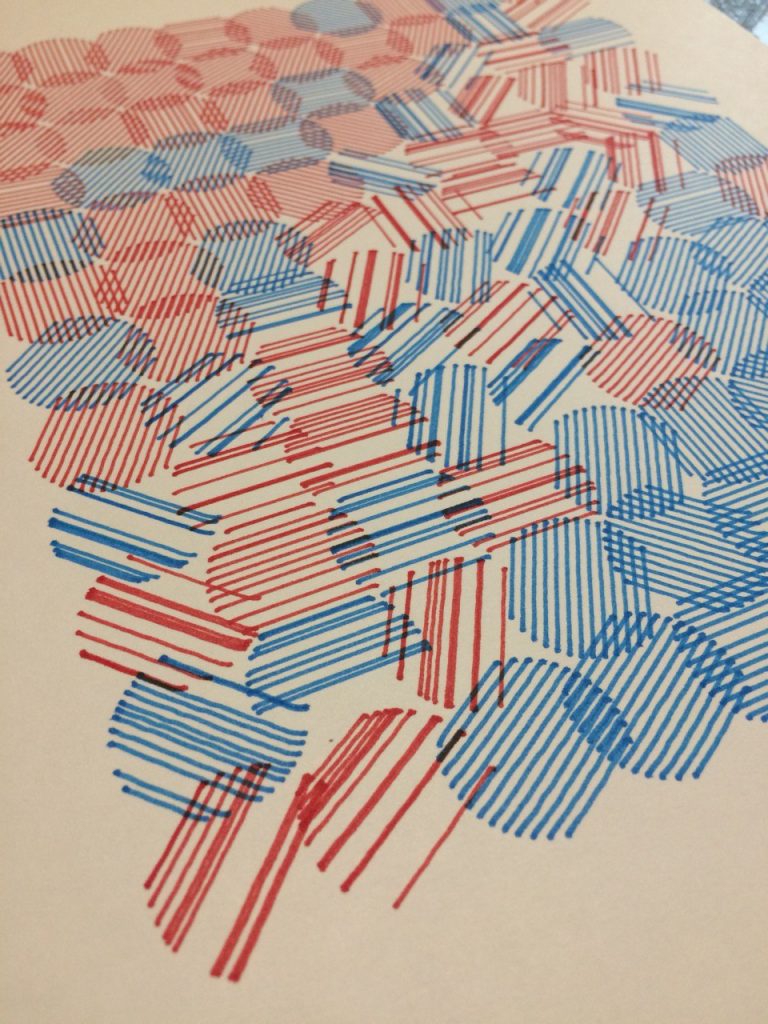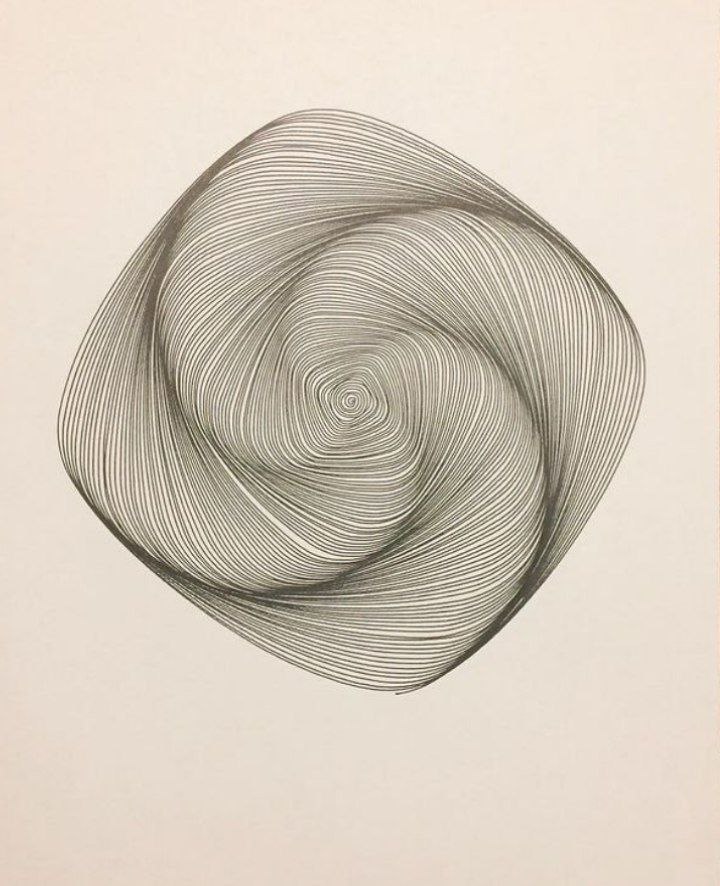What is Generative Art?
Generative art refers to art that has been created with the use of an autonomous system. An autonomous system in this context is generally one that is non-human and can independently determine features of an artwork.
Wkipedia

In simple terms, generative art is an art that is created using computer algorithms. The result of the algorithm’s work could be plots, drawings and videos, music and even 3D models.
Generative art originated in the 60s. With the development of technology it has become widespread. This form of art is reflected even in music area — on the cover of the album Joy Division «Unknown pleasures».

One of the key feature of this art is the extending of pictures with random values and noise — it allows you to get unpredictable results even using simple algorithms. Another feature of code art is loop. Loops and cycles helps to repeat simple and complex actions and achieve beautiful visual effects.
Why generative art is so cool (for me)
Despite the fact that realism still makes a big impression and has a huge army of fans, cubism, avant-garde, minimalism and other styles of visual art also are very popular. The concept of minimalism gets a great response among people today. Cubism and avant-garde provide space for imagination and the opportunity to give meaning to a painting, both for the artist and for the observer. And that is the same for generative art.
In a series of portraits I used non-standard techniques that accurately reflect the character’s personality from the one side and from the other — give space for reflection. Such series of portraits have a cool effect — if you look at the drawing up close, you can only see a chaotic set of lines and dots, but if you move back step by step, the same set of dots and lines takes shape and meaning, turning into the portrait.

Johnny Cash 
Johnny Cash A1 size
In abstract drawings I experimented with regular geometric forms, combining them with each other and adding random values. It seems like there is nothing to expect from a simple line, but by changing the size, position and angle, as well as color, you can get a cool effect that is nice to see.

CIR-1 
CIR-2
How do I usually work with generative art? I use special tools for programming my visual art — Processing IDE, Inkscape and Polargraph software. I write code in Processing and export results in svg format. After that I make some work in Inkscape to finish the art and prepare it for plotting. Polargraph software helps me to process images with different effects and prepare it for plotting on a big size paper.
What is next? How to make digital art tangible and real?
Plot
I use two plotting/drawing machines, which I maintained by myself from 3D printed parts.
The first one is analog of AxiDraw V3 — table drawing machine. It’s like CNC machine — it is controlled with special program codes that are sent by Inkscape.
The second one is Polargraph — big wall plotter, which also is controlled with special commands that are sent by Polargraph software.
The main difference between them is accuracy, speed and size. I use AxiDraw to plot small visuals (from A5 to A3 sizes) with high accuracy. Usually it takes from 15 minutes to few hours. For plots bigger than A3 size I use Polargraph. The drawing process with Polargraph can take several days. Axidraw and Polargraph use special markers for plot.
As a result we get physical representation of generative machine art — machine helps to create and plots the drawing! It’s the magic!
If you want to have some art made by machines, welcome to my store! Hope you will enjoy!